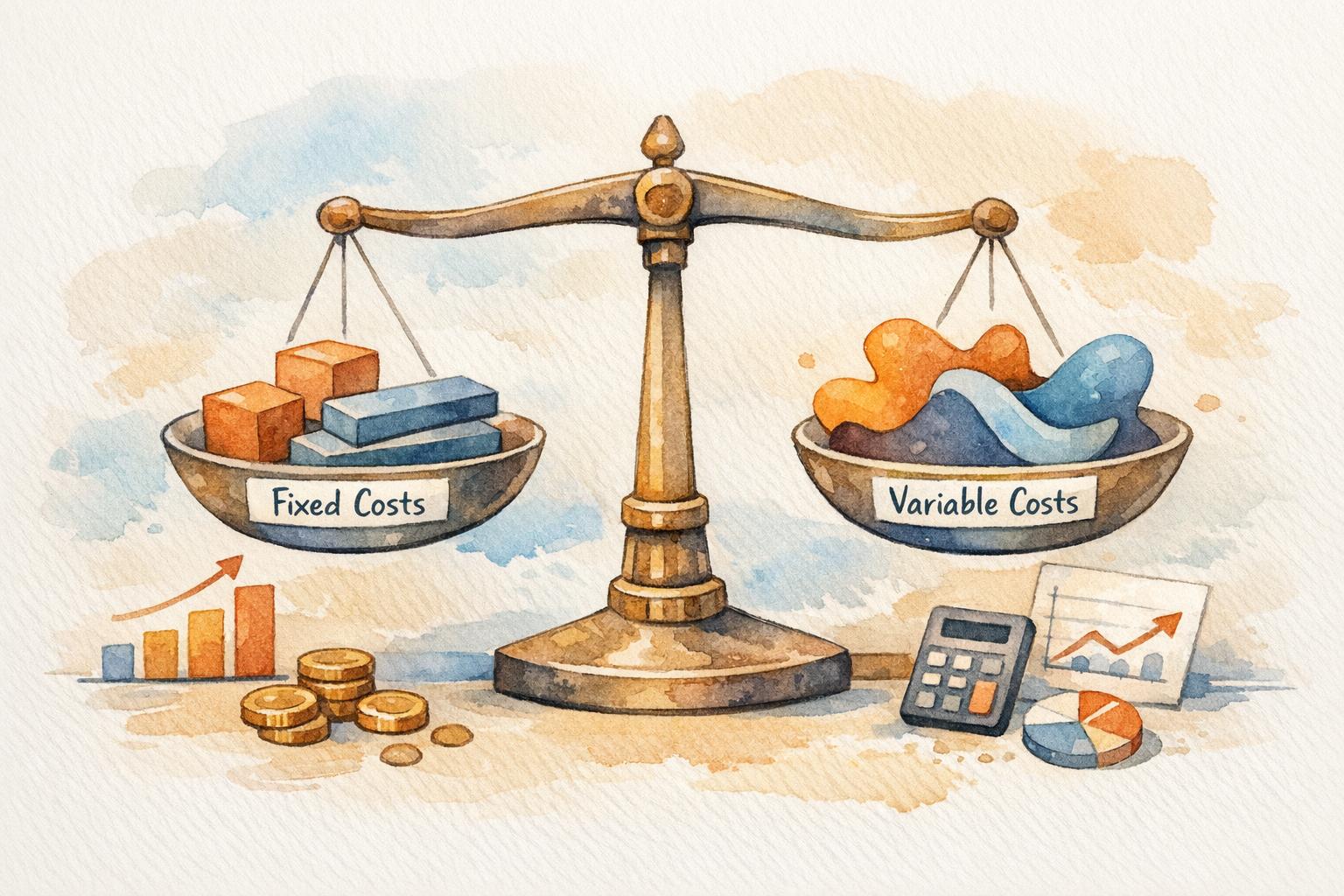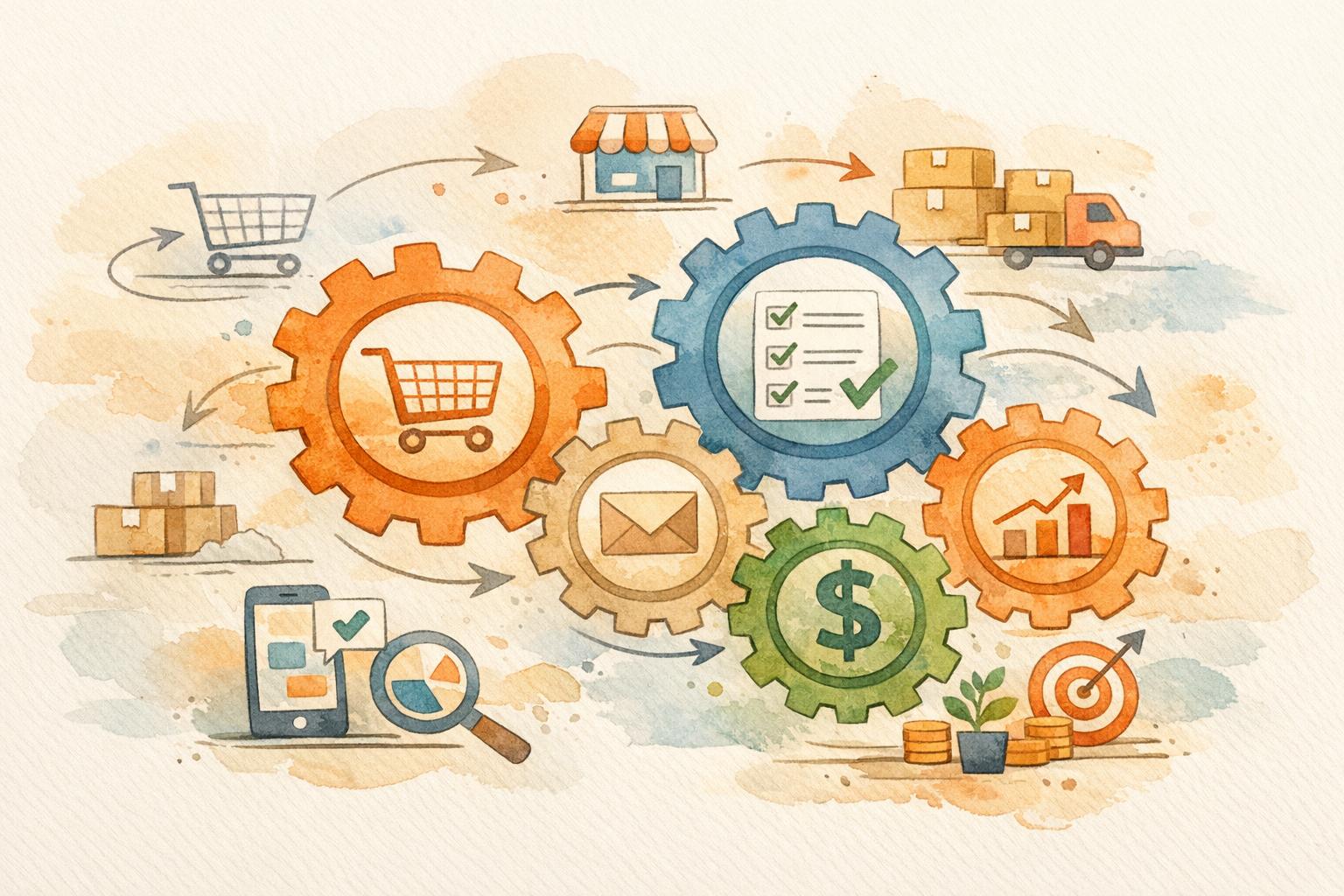Email marketing generates $36 for every $1 spent, while SMS marketing delivers $71 per $1. Both channels offer unique advantages for eCommerce businesses, but their effectiveness depends on specific goals and strategies.
Email: Best for detailed content, newsletters, and long-term customer engagement.
Open rate: 20%
ROI: $36 per $1
Click-through rate: 3%
SMS: Ideal for time-sensitive promotions and immediate customer actions.
Open rate: 98%
ROI: $71 per $1
Click-through rate: 36%
Quick Comparison
Metric | SMS Marketing | Email Marketing |
|---|---|---|
Open Rate | 98% | 20% |
Click-Through Rate | 36% | 3% |
Response Time | 90 seconds | 90 minutes |
ROI per $1 Spent | $71 | $36 |
Key takeaway: Use SMS for quick actions and email for in-depth content. Combining both channels can maximize results.
Email VS SMS Marketing 2025 [Practical Guide for Ecommerce]
ROI Measurement Metrics
ROI metrics play a crucial role in shaping eCommerce investment strategies. Below, we break down key engagement metrics for different channels.
Message Open Rates
When it comes to open rates, SMS marketing leads the pack. Text messages have an impressive 98% open rate and are typically read within 90 seconds. In comparison, email marketing has a 20% open rate, with responses taking an average of 90 minutes.
Metric | SMS | |
|---|---|---|
Open Rate | 98% | 20% |
Response Time | 90 seconds | 90 minutes |
Immediate Response Rate | 45% | 6% |
Click-Through Rate | 36% | 3% |
Sales Conversion Data
Open rates tell part of the story, but conversion metrics reveal the true impact of each channel. For instance, REDCON1 achieved a staggering 99.93% open rate, doubled its subscriber list in just one year, and delivered an ROI of 113× through SMS campaigns.
Similarly, Beast & Buckle saw a 21% click-through rate using SMS marketing. This effort also resulted in a 21.8% review submission rate, with customers leaving an impressive 4.91-star average rating.
Cost vs Customer Value
Analyzing costs further highlights the ROI differences between SMS and email marketing:
SMS marketing generates $71 for every $1 spent.
Email marketing yields $36 per $1 invested.
Here’s a quick breakdown of SMS campaign costs:
Messages: $0.01 to $0.05 each
Keywords: $15 to $25 each
Short codes: $1,000+ per month (random) or $1,500+ per month (vanity)
"Running a successful, targeted text marketing campaign will likely provide an impressive return on investment of up to 500%. Customers can expect the monetary value they receive to be five times their original input. This type of return is far higher than the returns other marketing channels can offer." - JookSMS
One standout example is Princess Polly, which achieved a 73× ROI from non-engaged segments by using flash sale campaigns and revenue-driven SMS blasts.
Email Marketing Results
Email ROI Numbers
Email marketing continues to deliver impressive returns in eCommerce, with an average of $42 earned for every $1 spent - equating to a 4,200% ROI. The retail and eCommerce sector leads the pack, boasting an ROI of 45:1.
ROI also depends on how often campaigns are sent:
Monthly Email Volume | ROI Ratio |
|---|---|
9–16 emails | 46:1 |
2–4 emails | 31:1 |
1 email | 13:1 |
In Q4 2024, email marketing was responsible for 27% of total store revenue, driving more than $230 million in purchases. Specific campaign types show how customer behavior impacts these results:
Welcome emails generate 320% more revenue than standard campaigns.
Cart abandonment emails achieve an impressive 44.76% open rate.
Post-purchase emails see 217% higher open rates compared to regular emails.
Upsell emails maintain a 61.7% open rate and a 9.16% conversion rate.
These numbers highlight email marketing's ability to engage customers and drive revenue.
Email Marketing Advantages
Email marketing’s reach is unmatched, with 4.3 billion users worldwide - 99% of whom check their inbox daily. For eCommerce, email offers several key benefits:
High Deliverability: eCommerce emails reach inboxes 96% of the time.
Mobile-Friendly: 60% of emails are opened on mobile devices.
Drives Purchases: 60% of consumers have made purchases through marketing emails.
Preferred by Customers: 72% of customers favor email for brand communication.
Despite these strengths, email marketing does come with its own set of challenges.
Email Marketing Challenges
Several obstacles can affect the overall performance of email campaigns:
Inbox Overload: The average adult receives over 100 emails daily, many of which are spam.
Low Engagement Rates: Open rates average around 20%, with click-through rates below 3%.
Resource Limitations: 62% of brands cite lack of time and expertise as reasons for not prioritizing email marketing.
However, there are ways to overcome these hurdles. Personalized subject lines can increase open rates by 26%, while segmented campaigns can boost revenue by up to 760%. Companies that prioritize email marketing often see it become a major revenue driver, with some businesses attributing as much as 31% of their total revenue to this channel.
SMS Marketing Results
SMS ROI Numbers
SMS marketing stands out with impressive engagement and return rates. For every $1 spent, businesses see returns ranging from $45 to $71, with direct response metrics showing up to a 7,000% ROI.
Here’s how SMS metrics compare:
Metric | SMS Metrics | Comparison to Email |
|---|---|---|
Open Rate | 98% | 4.9x higher than email |
Click-Through Rate | 35%+ | 11.7x higher than email |
Conversion Rate | 29% | 1.9x higher than email |
Response Time | 90 seconds | Near-instant engagement |
More than half of small and medium-sized businesses report ROIs between $21 and $40 per dollar spent. Companies that incorporate personalization into their SMS campaigns see an additional 40% increase in revenue. These numbers highlight SMS as a fast, effective tool for reaching and engaging audiences.
SMS Marketing Benefits
SMS marketing is particularly effective for eCommerce businesses aiming for quick customer engagement and better conversion rates. Here’s why:
High Engagement: With a 98% open rate, SMS ensures your message gets seen almost immediately.
Immediate Actions: Click-through rates hover around 36%, driving fast responses.
Revenue Impact: SMS campaigns generate 17 times more revenue than email campaigns.
Affordable Costs: The cost per message ranges from $0.01 to $0.50, making it a budget-friendly option.
SMS Marketing Limits
Despite its advantages, SMS marketing comes with some cost factors. Platform fees can vary depending on message volume, type, and the phone number used (toll-free, 10DLC, or shortcode).
One example of cost management in action is Dahmakan, a food delivery service in Southeast Asia. By prioritizing SMS as their main communication tool, they doubled their conversion rates while cutting costs by 30%. This shows how businesses can balance expenses while maximizing results.
ROI Improvement Methods
Email ROI Tips
Improving email marketing strategies can significantly boost engagement and conversions.
A key factor? Personalization. Emails with personalized subject lines see a 26% increase in open rates. When combined with segmentation, the results are even more impressive - segmented campaigns have been shown to drive 760% more revenue than non-segmented approaches.
Here are some proven strategies to enhance email ROI:
Mobile Optimization: Nearly half (46%) of all marketing emails are opened on mobile devices. Campaigns optimized for mobile generate four times more revenue per email compared to desktop-only versions.
Strategic Timing: Understanding when your audience is most likely to engage can make a big difference. For instance, A/B testing in a major campaign revealed that sending emails at optimal times significantly increased revenue.
Advanced Segmentation: Segmentation can dramatically improve performance. For example:
Metric
Non-Segmented
Segmented
Improvement
Open Rate
42%
94%
+124%
Click-Through
4.5%
38%
+744%
The same principles apply to SMS campaigns, where timing and message quality also play a critical role.
SMS ROI Tips
SMS marketing delivers strong results when executed with precision. Optimized SMS campaigns can generate up to $71 for every $1 spent.
To get the most out of SMS marketing:
Strategic Timing: Timing is everything. For example, sending messages during peak engagement hours - like 9 AM to 12 PM or 5 PM to 9 PM on weekdays - can improve results. On Sundays, the ideal times are 10 AM to 12 PM and 4 PM to 7 PM.
Performance Tracking: Keep an eye on metrics like click-through and opt-out rates. For instance, Hrvatski Telekom increased revenue by 20% year-over-year and improved customer interactions by 10% through regular analysis.
Focus on Quality: Sending fewer but more impactful messages can save costs and boost revenue. Oladoc, a healthcare platform, cut costs by 25% while increasing revenue by 5% by prioritizing quality over quantity.
Combined Channel Strategy
Combining email and SMS strategies can amplify results even further. In fact, eCommerce brands that failed to integrate these channels missed out on nearly 500,000 orders in 2023.
Here’s how automation impacts performance:
Metric | Campaign Messages | Automated Messages | Improvement |
|---|---|---|---|
Email Open Rate | 25.2% | 42.1% | +67% |
Email Click Rate | 1.5% | 5.4% | +260% |
Email Conversion | 0.07% | 1.9% | +2,614% |
SMS Click Boost | – | +67% | – |
SMS Conversion Boost | – | +26% | – |
"SMS marketing delivers an average ROI of $45-$71 for every $1 spent, though this can vary depending on your industry, campaign type, and execution strategy." – Sandra Posavac, Content Marketing Specialist
For best results, use SMS for time-sensitive updates like promotions or order alerts. Meanwhile, email is ideal for newsletters and detailed content. This balanced approach ensures you maximize engagement and reach across both channels.
Conclusion
Key Takeaways
Both email and SMS marketing offer strong advantages for eCommerce. For instance, SMS marketing delivers an impressive return of about $71 for every dollar spent, compared to $36 per dollar for email marketing.
Here’s a quick comparison of the two:
Metric | SMS Marketing | Email Marketing |
|---|---|---|
Average Open Rate | 98% | 20% |
Response Time | 90 seconds | 90 minutes |
ROI per $1 Spent | $71 | $36 |
Message Read Time | Within 3 minutes | Variable |
These figures highlight how each channel can play a specific role in driving eCommerce growth.
When to Use Each Channel
Understanding when to use SMS or email marketing can help you optimize your strategy:
SMS Marketing Works Best For:
Time-sensitive promotions
Order updates or urgent alerts
Immediate customer engagement
Email Marketing Is Ideal For:
Sharing detailed product information
Sending newsletters or updates
Creating visually engaging content
Building long-term relationships
Providing educational resources
"By integrating your SMS and email campaigns, you'll be able to strengthen your marketing approach with a strategy that engages your customers in the way they want to be engaged with." - Mara Miller, Director of Marketing, Vibes
Research shows that 75% of customers prefer receiving offers via text rather than email. However, combining both channels often yields the best results. SMS drives quick action, while email supports with in-depth content and storytelling, creating a balanced and effective strategy.
To succeed, focus on timing and content planning. SMS messages are most effective during high-engagement periods, while emails are better suited for long-term campaigns. The goal is to keep your messaging consistent while tailoring the format and delivery to each channel’s strengths.



